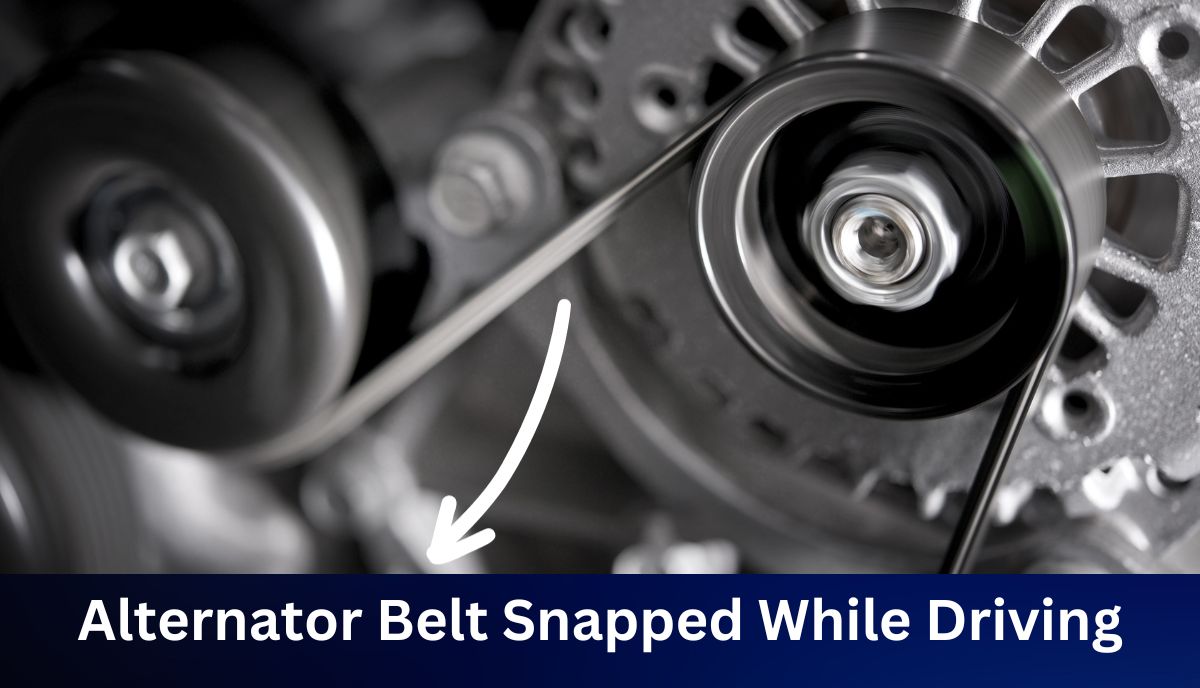Alternator belts don’t break without a reason. If you were unfortunate enough for yours to snap while you were driving, the following factors are probably at fault:
1). The Belt Is Old
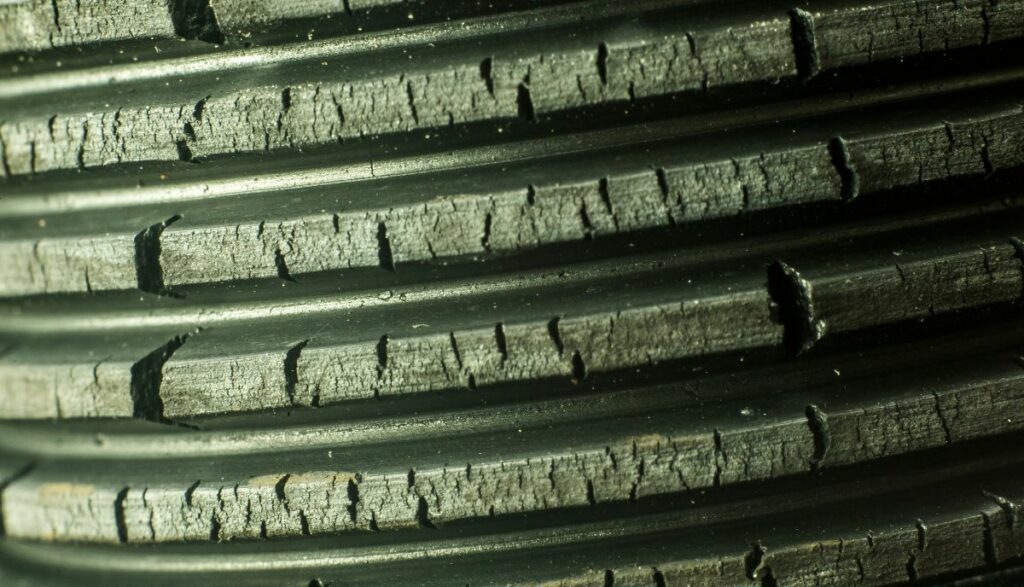
Alternator belts are not indestructible. The experts at Blue Star have noticed that many manufacturers use ethylene propylene diene monomer rubber to make newer belts. Unlike the older neoprene rubber belts, which boasted a lifespan of 50,000 miles, EPDM rubber belts can withstand 100,000 miles.
Nonetheless, regardless of their construction, the rubber in an alternator belt will break down as it ages. The surface will become glazed, which is a problem because belts use friction to move the pulleys in a car. A glazed belt is more likely to slip.
If you insist on using a worn-out belt beyond its expiration date, it will snap unexpectedly.
2). The Pulleys Are Misaligned
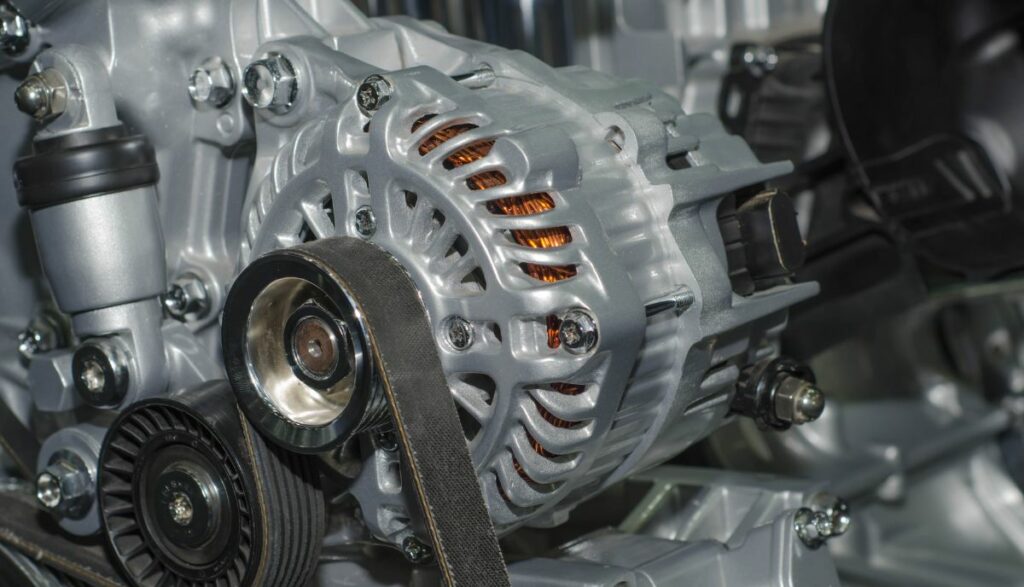
Pulleys and alternator belts work hand in hand to run the alternator, water pump, power steering pump, and AC compressor. Inexperienced mechanics have been known to misalign the pulleys, which won’t snap the belt instantly.
Instead, misalignment will increase the belt’s rate of wear and tear. Misalignment can occur because:
- One pulley is outside the other pulley’s plane, but the shafts are parallel.
- The shafts are not parallel even though the pulleys are in the same plane.
- The shafts are not parallel, and one pulley is outside the plane of another.
3). The Alternator Belt Is Too Tight
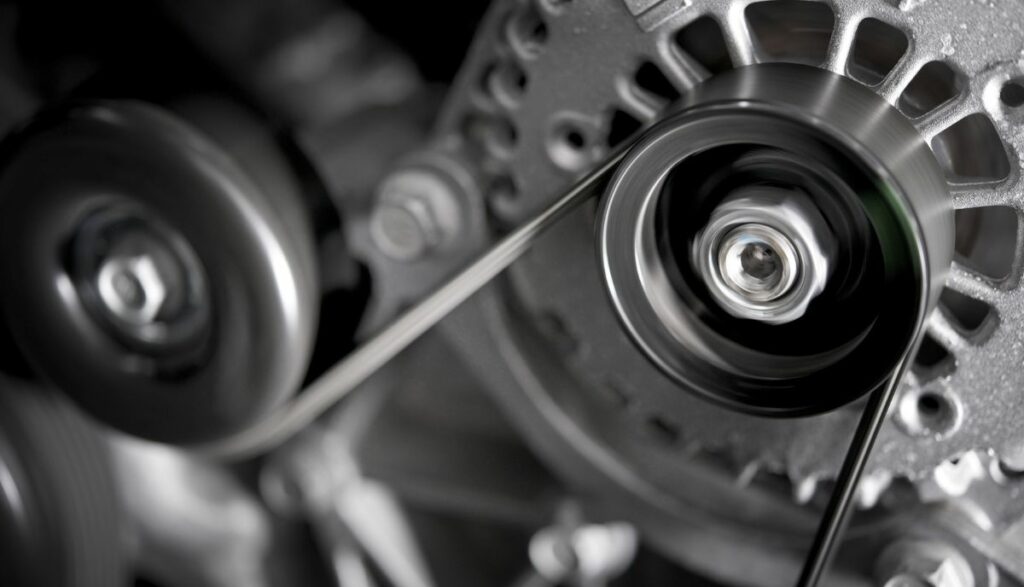
An Alternator belt shouldn’t be too tight or too loose. You’re looking for roughly half an inch of play. Laypeople avoid extreme tautness because they expect the issue to crack or break the belt. You may also destroy the pulleys.
They get complacent where loose belts are concerned. That is a mistake because a loose belt will compromise the efficiency and functionality of the accessories it runs. The belt’s rate of wear and tear will also increase. Therefore, you should worry about improper tension as a whole, not just tight belts.
4). You Mishandled The Alternator Belt
When was the last time you handled the alternator belt? Did you tamper with it while servicing your vehicle? Maybe you forced a small belt onto a large pulley, automatically exposing the component to more tension than it could withstand.
Or maybe you twisted and crimped the belt. Do you trust the quality of the belt you installed? Some low-quality belts are too frail to withstand the load a vehicle’s accessories exert.
5). You Exposed The Belt To Extreme Temperatures
This happens in the winter. Cold weather will wreak havoc on the oil, alternator, carburetors, and more. The alternator belts are not immune to the consequences of low temperatures. The belt will crack in freezing conditions.
6). The Belt Is Contaminated
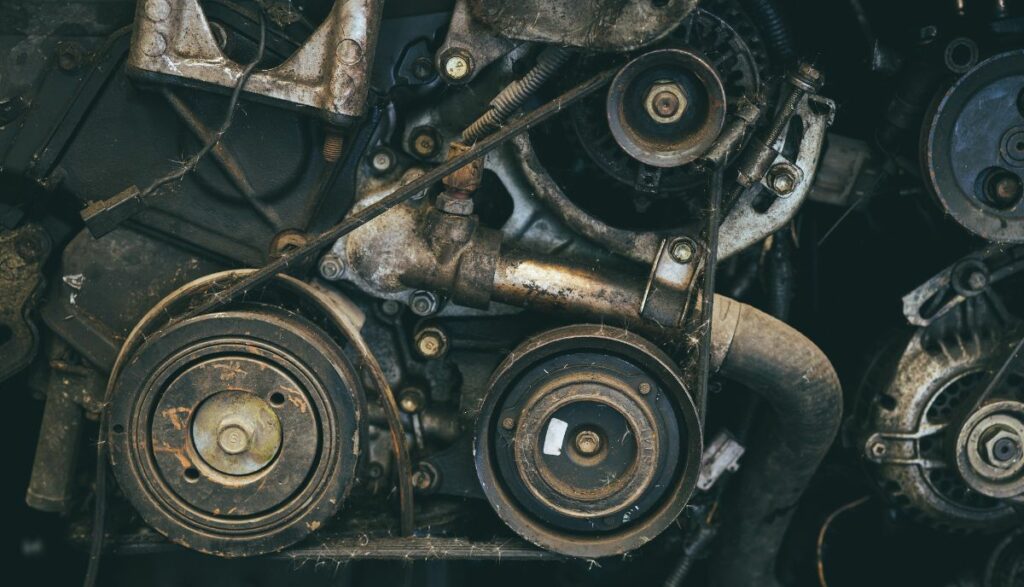
Lubricants like oil and grease are problematic because they lead to slippage. A slipping belt is susceptible to accelerated wear and tear.
Immediate Steps To Take When The Alternator Belt Snaps On The Road
Pull over. This is the safest option. If you’re still in your driveway, park the car and call a mechanic. If you have a repair shop nearby, you can risk a short trip, depending on the belt type.
A dedicated alternator belt is not as dangerous as a serpentine belt. A broken serpentine belt affects multiple items, including the water pump. On the other hand, a dedicated alternator belt typically limits the consequences to the alternator once it breaks.
You should avoid driving a car with a broken serpentine belt unless absolutely necessary. If you’re already on the road, park in a safe spot once you notice the signs of a broken alternator belt. Wait for the mechanic to assess the damage and offer a solution.
Consequences Of An Alternator Belt Failure While The Vehicle Is in Motion
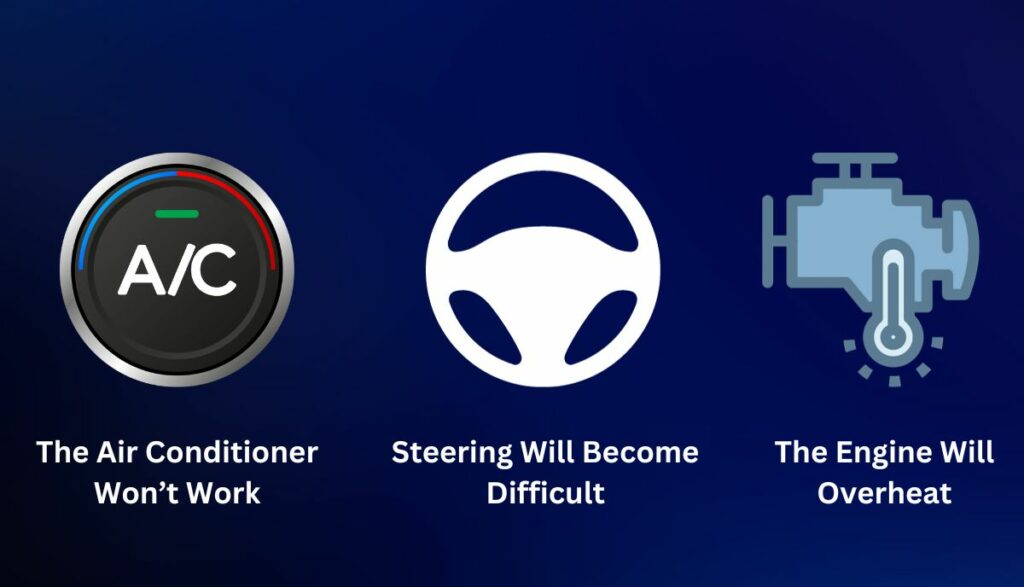
Newer vehicles use one belt to run everything. Older models assign a belt to each accessory. Depending on your car’s setup, you can expect the following:
1). The Air Conditioner Won’t Work
The serpentine belt drives the AC compressor. Without the compressor, the AC cannot control the vehicle’s temperature. Therefore, a broken belt may prevent the air conditioner from running.
2). Steering Will Become Difficult
The steering wheel may become heavy and unresponsive because the broken belt cannot run the power steering pump. This may scare inexperienced drivers, especially if they’ve never driven a vehicle without the power steering mechanism. You can’t rule out the possibility of an accident.
3). The Engine Will Overheat
A broken serpentine belt will compromise the water pump’s operations. This matters because the water pump circulates the coolant through the engine. Without coolant, the engine will overheat.
The water pump is not a problem if the car uses dedicated belts for each accessory. It only comes into play for the serpentine belt, which runs everything. The temperature gauge will warn you that things have gone wrong. Even if it doesn’t, you will see the smoke billowing from under the hood.
Signs And Symptoms Of A Snapped Alternator Belt During Driving
Don’t expect to hear the belt when it snaps. The engine is too loud for the noise of a snapping belt to reach your ears. The following symptoms will alert you:
- You may hear strange sounds.
- The battery icon will flash on the dashboard because the alternator has stopped working, and your vehicle’s electronics are draining the battery.
- The steering wheel may become heavy and unresponsive because you’ve lost power steering.
- The temperature gauge will spike because the engine is overheating. This happens in cars where a serpentine belt powers the water pump.
- The air conditioning will stop working. Again, this happens in models with a serpentine belt.
- The unstable power supply will cause electrical issues, such as flickering lights and malfunctioning electronics.
- The engine may stall because the fuel injectors don’t have a reliable power supply.
Is It Safe To Continue Driving After The Alternator Belt Breaks?

No, it isn’t. The car won’t burst into flames. In fact, you may stay on the road for a few more hours before the vehicle’s functionality deteriorates, especially if you remember to turn the electronics off.
A dedicated alternator belt runs the alternator. The alternator charges the battery and powers the electronics. A broken belt prevents the alternator from working. This compels the vehicle to use the battery as its primary electrical source.
The more electronics you run, the faster the battery will drain. Therefore, drivers are incentivized to lower the car’s electrical consumption by shutting all unnecessary accessories off. But even if you reduce the car’s consumption, the battery will inevitably deplete. The results will depend on your vehicle.
Older cars will keep running. The depleted battery is not an immediate threat. They use it primarily to start the engine.
Problems arise in modern vehicles with serpentine belts. A broken serpentine belt can destroy the engine in minutes by restricting the coolant flow and allowing engine temperatures to skyrocket.
Additionally, you will lose the power steering, which is where potential accidents can occur. What does this mean? Your ability to drive safely with a broken alternator belt depends on the vehicle.
Newer cars have sophisticated features that are likely to malfunction once the alternator stops working and the battery depletes. Park them and wait for a tow truck.

